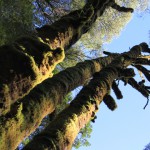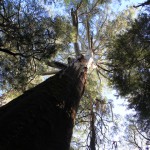-
Recent Posts
Recent Comments
- Amone B on ‘What’s in it for me?’ learners
- Zader 1 on ‘What’s in it for me?’ learners
- Zader 1 on Interviewing tips
- Amone B on Interviewing tips
- Adango on Interviewing tips
Archives
The State Library of Queensland LOTE collection currently holds over 80,000 items, equivalent to one item for every six LOTE speakers in Queensland, with public libraries able to choose LOTE materials by accessing the SLQ collection in person at Cannon Hill, Brisbane or by completing an online request form. New LOTE items arrive regularly (the latest are titles in Korean, Spanish, Czech, Russian, Urdu & Romanian by popular authors) See the updated list of languages available from State Library
Learn about distribution of languages in Queensland with SBS Census Explorer – search by language, then right mouse click on the shaded areas of the 2015 Google map to find 2011 census data on your community. The website also provides Australian census data on language speakers such as educational status, age and gender, birthplace of parents, income, proficiency in spoken English and more.
Languages Australia is an online directory of foreign language education options for children of all ages. The website includes links to over 270 bilingual playgroups, more than 120 preschool age options (including bilingual childcare and story time in libraries), state school foreign language programs, after school options, and a new local cultural events noticeboard. To add your language program or event, make an enquiry, or request a brochure visit Languages Australia online
Cultural Diversity Week is Queensland’s largest celebration of cultural diversity. It includes events and activities across Queensland that showcase the benefits of our state’s diversity & promote statewide community participation. For more information visit the Cultural Diversity website.
The Bridging Differences Playbook maps out core skills & strategies for positive dialogue, relationships, and understanding between groups or individuals across political, racial, religious, or other divides. Produced for the US but based on wisdom and best practices from decades of scientific studies/interviews/ with dozens of leaders & ground-breaking programs tackling these issues. This can help tutors and learners gain confidence & tools to take steps toward overcoming divisions & divides – whether within families/between groups, or across nations.
Useful sites for non-english speaking students:
The sounds of English – http://www.soundsofenglish.org/pronunciation/th.html – a handy site for non-english speaking students, gives specific help with tongue and mouth movements with sounds like th, ph
Learning about Australia – http://beach.prace.vic.edu.au/ – Preston Reservoir Adult & Community Education. Exercises about the Australian beach – safety, dangerous animals etc.
Many things – http://www.manythings.org/ – Designed for ESL students but is useful with all LLN students.
Tense use, meanings of verbs – http://www.englishtenseswithcartoons.com/ – Useful for ESL students who have trouble choosing the correct tense to use. A short, simple cartoon clearly illustrates the meaning of the verb.
See wordbalance’s helpful literacy resources for a large cache of information for all students
Self-care for tutors.
These tips are for tutors working with any student, but they are particularly shaped for those working with any student, but they are particularly shaped for those working with Middle-Eastern refugees. They were supplied by a TAFE English Language and Literacy Services Youth Support Officer and a Case Manager during a tutor workshop in 2013.
The impact, the iceberg.
Before they reach Australia, refugees may experience major loss, torture, trauma, separation from family and friends, loss of identity and control, living in limbo and disrupted education.
Settling in Australia can include financial hardship, housing, trauma-effects, language struggles, physical, health & behavioural issues, acculturation, social exclusion, and lack of experience to find work.
It’s like looking at an iceberg… A refugees language, accent, look and clothing might give some clues, give you the tip of the iceberg. Lower down is the rest of the iceberg – the unseen trauma.
Educational challenges may include lack of focus, poor attendance, Lack of interest in group-activity participation, high/unrealistic expectations, anger and irritability and lack of trust.
What can help:
- Give simple instruction. Every 15 – 20 mins bring them back-to-the-present with a physicial instruction (pick up pen, stand up, movement)
- Give hope but not false hope. If they want to be a doctor or lawyer – start with the basic training and help open windows at a lower achievable level first (dental assistant)
- If they are not in the mood for conversation, go for a walk in nature.
- Strong cultural awareness (Middle Eastern cultural traditions like the expectations for the role of a teacher, eye contact, etc )
What are demanding students really trying to tell us? I am unhappy, I need help, I need attention, I don’t understand, I want to be in control, I can fix my mistakes, I need ….. And …I just want to be normal!
What can you do?
- Your presence is the best gift to your students – BUT accept what you can do and cannot do.
- Be kind and compassionate – BUT refuse to be a victim and be in power and communicate clearly, assertively and firmly
- Be there for them when needed – BUT show your authority and establish boundaries
- Be polite – BUT learn to say NO when needed
- Avoid going to extreme
- Confront the behaviour not the person (“if it was my son, I would do this… “)
- Afghani and Iranian students are used to teacher-orientated style (someone in control) and they value discipline. Use eye contact, or shoulder contact.
- Be honest and frank. Talk about yourself and how you tackled something, so it is real.
What to do in difficult situations
- Stay calm
- Paraphrase to increase understanding
- Notify the student that they are breaching the student code of conduct
- Step aside, or walk out of class
- Seek help from your support team
Your presence is a gift to your student , so TAKE CARE OF YOURSELF. Prevent burn-out or trauma to yourself:
- Be aware of your and others feelings (Are you alright?)
- Debriefing (use internal and external resources)
- Get away, rest and play when possible. It really helps to get away and do something you have never done before!
* This information came from a Cross Cultural Awareness (Middle East) workshop run by Michael Kavian. Michael is a Tafe Qld English Language and Literacy Services (TELLS) Youth Support Officer and a Case Manager.
Learners who are new to Australia may like to know about ANZAC Day, Australia’s most important national day.
ANZAC Day (25 April)
Anzac day marks the anniversary of the first war fought by Australian and New Zealand forces – the First World War. ANZAC stands for Australian and New Zealand Army Corps.
When the war broke out, Australia was only a new country. In 1915 Australian and New Zealand soldiers set out to capture the Gallipoli peninsula in order to open the Dardanelles to the allied navies. The ultimate objective was to capture Constantinople (now Istanbul in Turkey), the capital of the Ottoman Empire, an ally of Germany.
The Australian and New Zealand forces landed on Gallipoli on 25 April, meeting fierce resistance from the Turkish defenders. The war here dragged on for eight months. There were great hardships and over 8,000 Australian soldiers had been killed. 25 April soon became the day on which Australians remembered the sacrifice of those who had died in the war. 60,000 Australians who had died during the war.
After the Second World War, ANZAC Day also served to commemorate the lives of Australians who died in that war. Now the meaning of the day has been further broadened to include Australians killed in all the military operations in which Australia has been involved.
Australians recognise 25 April as an occasion of national remembrance, which takes two forms. Commemorative services are held at dawn – the time of the original landing – across the nation. Later in the day, ex-servicemen and women meet to take part in marches through the major cities and in many smaller centres. ANZAC Day is a time when Australians reflect on the many different meanings of war.
The Dawn Service observed on ANZAC Day has its origins in a military routine which is still followed by the Australian Army today. During battle, the half-light of dawn was one of the most favoured times for an attack. Soldiers in defensive positions were woken in the dark before dawn.





